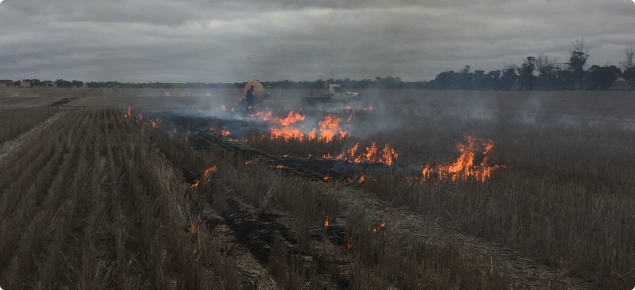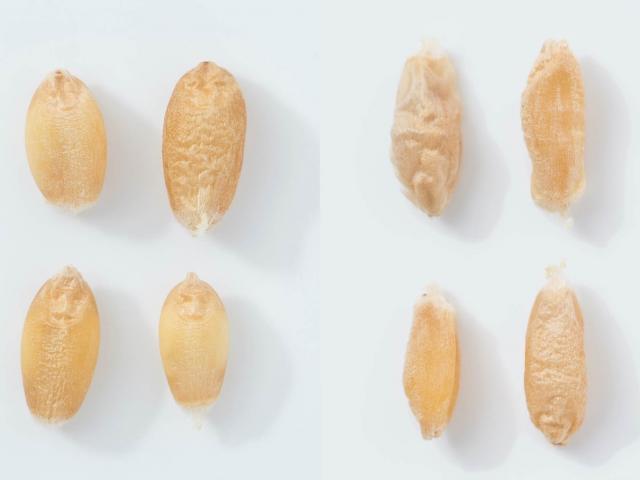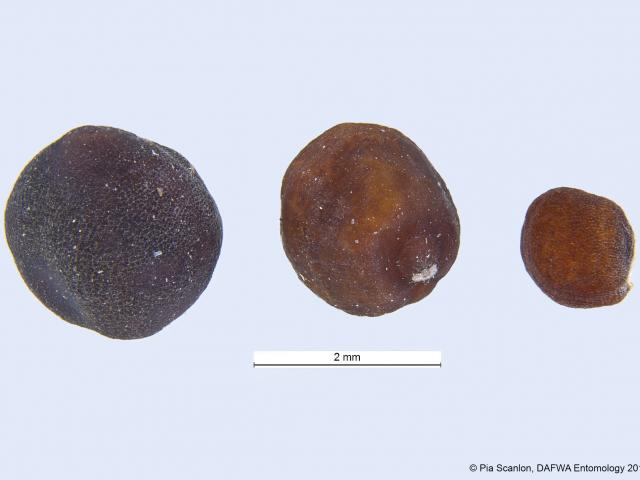Climate resources
Frost risk maps are produced July to October each year for growers and advisors to observe the severity and occurrence of frost events for the south west land division. These maps aid in strategic monitoring of crops for frost damage and help inform salvage options. Historical maps are compiled annually from 1975, showing the occurrence and severity of frost events for each month (July, August, September and October). The August, September and October data is then been combined to show occurrence and severity over these sensitive months in one map.
An additional resource is the Seasonal climate information frost risk map. Frost risk maps show the average number of low temperature events occurring in the months when crops are most at risk of frost damage.
The Extreme weather events tool uses data from DPIRD's extensive weather station network to map extreme temperatures, either below or above a specified threshold. It provides real-time information about the location, duration and severity of frost and heat stress events, to help grain growers manage accordingly to reduce their financial impact.
Salvage options
There are a number of options available for managing crops that have been frosted. The following table highlights these options and the pros and cons of each. The suitability of each option will be dependent on the severity of the frost, what can be done at the cheapest cost and give best return on investment and maximising weed control.
| Option | Advantages | Disadvantages | Considerations |
|---|---|---|---|
| Harvest |
|
| Grain quality may also be compromised depending on the frost timing. Frost affected grains usually have a lower hectolitre weight and higher screenings. Adjusting header settings and/or grading can be beneficial but check the feasibility first. If keeping seed for next season, it is important to source seed from least-affected areas to maximise establishment. Seed quality can be tested closer to seeding by DPIRD Diagnostic Laboratory Services for a small charge. |
| Hay/silage |
|
| Consider the demand and opportunity for marketing hay, potential for on-farm storage and use of hay from the frosted crop and the likely costs and returns from haymaking. Depending on soil moisture the plant may re-tiller and grain can be harvested. |
| Chain/rake |
|
| Consider weed burden, wind and water erosion. |
| Graze |
|
| The feed value will vary depending on crop type. Frosted pulse crops will have minimal grain present, so can't be considered ideal for finishing livestock. |
| Spray |
|
| Hay freezing the damage crop before grazing will maximise the fodder quality and rotation benefit. |
| Plough |
|
| It will depend on the rotation option planned for next year. A pasture option has different requirements to a crop option where stubble must be prepared. |
| Swath |
|
| More suited to lighter textured soils where erosion may pose a problem for green manuring. |
| Burn |
|
| Consider wind and water erosion risk. Particularly if grazing will occur before burning. |
Harvesting a frosted crop
Harvesting a frosted crop brings another layer of complexity to an already busy time of year. Some of the complications are limited to this season’s harvest; whilst others have ramifications for next season’s crop.
Cereals
Considerations for harvest
- Frost damage varies across the landscape in severity and scale in some areas.
- Better yielding paddocks and crops should be harvested first.
- Frosted crops are difficult to thresh due to higher residual sugars, lower grain volume and green material in the case of a plant re-tillering. Despite lower tonnages, daily harvest maintenance and regular clean down will remain vital to minimise machinery fatigue and fire risk in these difficult harvesting conditions.
- Grain quality may also be compromised depending on the frost timing. Frost affected grains usually have a lower hectolitre weight and higher screenings. Adjusting header settings and/or grading can be beneficial but check the feasibility first.
Considerations for next season
- Frosted stubble can rot off at ground level and be difficult to seed into. To minimise trash flow problems stubbles may have to be cut low.
- Given the residual nutrients in frosted crops there may be a risk of windrow effects.
- Evaluating weed seed burdens and wind erosion risk will help determine the best course of action.
- If keeping seed for next season, it is important to source seed from the least-affected areas to maximise establishment. Seed quality can be tested closer to seeding by DPIRD Diagnostic Laboratory Services for a small charge.
Canola
Canola has a greater capacity to recover from frost than cereals due to its indeterminate growth habit, however seed production can be severely affected, particularly if a frost occurs during the flowering to the clear watery stage (approximately 60% moisture). That being said, the effects of frost aren’t clear cut, as other environmental factors such as high temperatures will have a larger role in determining yield and quality. Overall management should not differ greatly from unfrosted canola crops but there are a few considerations to be aware of at harvest time.
Considerations for this harvest
- Frosted grain will be mushy or shrivelled, often the pods will have a scarred or blistered surface. Shrivelled seed may retain its green colour and affect oil quality.
- In severe frost events the developing seed will die, which turns into a mushy brown mass, drying to a small black or brown speck with poor oil quality.
- Growers are likely to see a reduction in yield where there has been a frost, however, if not all pods and seed have been frosted then a favourable finish can allow for seed filling and often favourable oil production.
Considerations for next season
- Avoid retaining grain frosted seed for onfarm use for sowing in subsequent seasons. Grading will remain important if keeping seed for next year. Where there has been a frost, seed is likely to be smaller which will make it challenging particularly in low rainfall areas where canola seed is often smaller.
- Mapping out the areas that were affected by frost will be useful information to help determine crop choice for subsequent seasons.
Recovery from frost
Frost is difficult to manage. It has a significant financial and emotional impact on the whole community.
Financial
- Conduct a full objective assessment to determine level of loss
- Evaluate possible salvage options
- Make note of the location and severity of frost, as this will help to inform future crop choice and post frost decisions
- Communicate and discuss the plan with your bank and farm advisors. It maybe wise to leave big decisions to after harvest once stress levels have reduced.
Emotional
- It's important for growers to remember to take care of themselves and support others who have suffered frost damage. Everyone deals with things differently and the effect will be different for every farming family
- Frost is an emotive issue because you can see such high yield potential, and you've worked hard all year to maintain that. Its important to acknowledge no one has done anything wrong in particular, it just comes back to one of those things where we can't farm to avoid frost damage or we'll all go broke
- Seek help from family, friends, the community and advisors to help work through this stressful period and help devise a plan to move forward.




